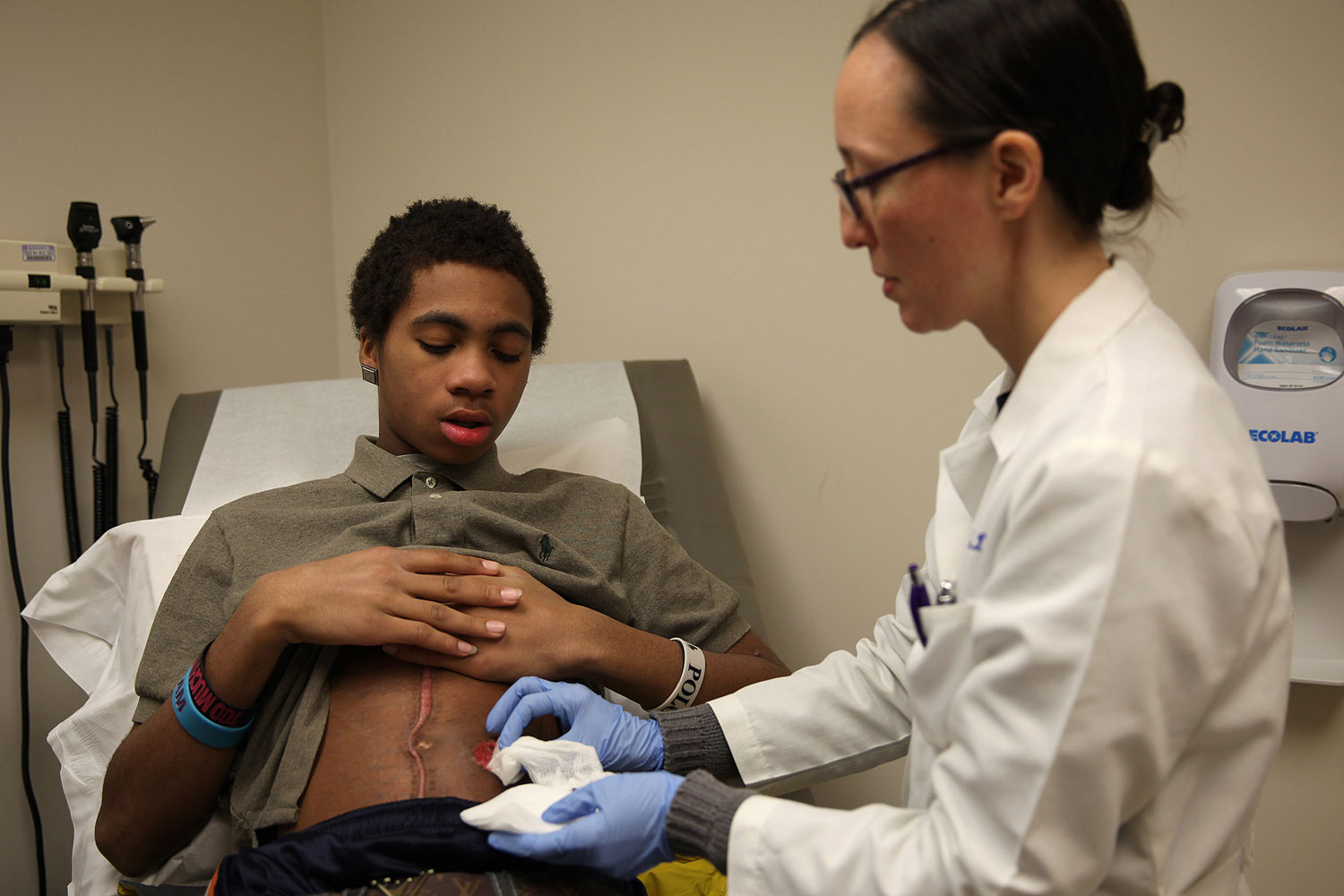When someone is shot in Chicago, it sets off a series of literally vital decisions: should the victim go to a trauma center (a facility with specialized staff and equipment to handle serious cases) or a community hospital? If the answer is the latter, should they stay there or be moved to a trauma center after being stabilized? If they do have to go to a trauma center, can the nearest one actually accept patients?
Assuming it's an emergency medical worker making the choice—and not friends, family, or a stranger, which happens quite a bit—there's a checklist to simplify and standardize the process.
But that triage doesn't always work as intended. A new study from the University of Illinois-Chicago published in JAMA Surgery found that over a five-year period, 18 percent of gunshot victims who should have gone to a trauma unit were instead sent to community hospitals. In other words, about one in six victims are not making it to the right type of hospital.
The authors say this is "more prevalent than expected," and those cases of under-triaged patients were most frequent on the West Side and the far South Side.
Problems on the West Side could stem from a few factors, like the number of nearby trauma centers (Mount Sinai, Stroger, Masonic, and Cook County hospitals) and coordination problems as well as the sheer volume of gun injuries in the region, says Lee Friedman, an environmental and occupational epidemiologist at UIC's School of Public Health and one of the study's three authors.
As for the far South Side, Friedman says, "This term of a trauma desert—it's been thrown around, I'm not really a big fan of the term—but if it applies anywhere, it applies for southern Cook County. There's simply no trauma units in the whole southern third of the county."
Friedman expects the planned University of Chicago trauma center to help the regional trauma network in general, but it may be too far north to greatly improve the situation in the communities in the southern end of the county, much of which lies outside the city's boundaries—and is closer, in any case, to the trauma unit at Advocate Christ in Oak Lawn.
Another problem is "self-transported" patients, when someone on the scene uses a private car to take the patient in. That's an inevitable part of the undertriaged patients. But Friedman still believes the number is too high, and sees another opportunity for improvement is in better use of existing resources.
"There still is room for improvement in terms of the coordination between hospitals, and establishing interhospital transfer, contracts, and agreements between the different facilities," Friedman says. Without coordination, patients can get "blocked"—not intentionally, but as the result of a process that's too onerous for the speed that trauma care requires.
"The hospitals that are trauma units, they meet monthly, they talk with each other, they talk about coordinating transfers," Friedman says. "And also they have these communication lines—I know that when I need to talk to someone, I need to talk to person A, instead of just a cold call. They're just calling into the trauma unit, and then they have to negotiate. And that's not the right time to be negotiating. It should be negotiated beforehand."
Some community hospitals have such arrangements. Earlier Friedman studied what happened after Saint James Hospital in south suburban Olympia Fields shut down its trauma center, a "level 1" facility, which means it is best equipped to handle serious cases. The trauma center, which was the last of its kind serving about 700,000 people in southern Cook County, was closed for financial reasons in 2008, Friedman says.
"[Advocate] Christ and Olympia Fields established a transfer agreement. They identified specific types of traumatic injuries that should be transferred after being stabilized at Olympia Fields to Christ Hospital. And it just makes it so much easier in terms of moving patients between A and B," he says.
It's something that may have contributed to what Friedman found: that there was no immediate increase in deaths or complications following the trauma unit's demise.
Coordination can make better use of thinly stretched trauma resources. But Friedman is worried that more trauma units could go the way of Saint James's center, especially with the Affordable Care Act on unstable ground. Many gunshot victims are uninsured, and with the ACA in place, hospitals can sign people up for insurance as they came in for medical care. But without the ACA, "all those new registered people are going to go back to being uninsured, and that puts extra financial pressure on the hospitals," Friedman says.
The higher-ups at hospitals (CEOs and CFOs) already tend to think of trauma units as "financial pit holes," Friedman says, even though trauma surgeons disagree. The additional financial pressure from treating uninsured patients could be the final straw.




